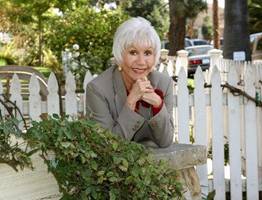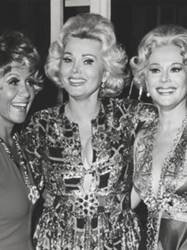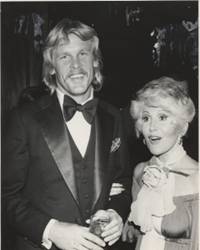Categories
-
Recent Posts
- 40 Days of Celebration for 40 Days of Service
- Rona Barrett, Gossip Columnist is Welcomed to Syndicated News
- Meet An Aspiring Woman Who Helps Seniors
- Santa Barbara Council for Self Esteem Presents: Rona Barrett
- Rona Barrett to Speak on Self-Esteem
- Tax Outlook for Seniors in the Upcoming Year
- Remembering Elizabeth Taylor
- Actor Mickey Rooney testifies to Congress about abuse against elderly, says he’s a victim
- American Entertainment News Pioneer Rona Barrett Receives Warm Welcome Aboard Queen Victoria
- Santa Ynez Valley–Around the Valley in 2010

Rona Barrett — Miss Rona Has Very Few Regrets
Rona Barrett — Miss Rona Has Very Few Regrets
By: Ronald Sklar
Copyright ©2010 PopEntertainment.com. All rights reserved. Posted: September 16, 2010.
Long before there was Entertainment Tonight, The E! Channel or even TMZ, there was our Miss Rona (as she was affectionately called), giving us the 411 on everybody from Cher to Barbra Streisand to Erik Estrada.
Her syndicated newspaper columns, followed by her colorful fan magazines (which bore her name, such as Rona Barrett’s Hollywood) and eventually her appearances on network television, helped build an industry about an industry. Thanks to Barrett, America finally saw through the bullshit glitz of Tinseltown. At last it was understood as a hard-driving business that wasn’t so much about common sense as it was about dollars and cents.
She never, however, lost sight of the entertainment value of entertainment. Her celebrity interviews, both in print and on video, are now considered something of a national treasure, a time capsule and a study in smarts. She blazed the trail not only for entertainment reporters and media, but for women as well. In 1975, her show biz updates and interviews went national – and supernova – as she began her stint as a correspondent for the brand new morning TV concept, Good Morning America.
Although she is retired from the business today and dedicating herself to important causes, she still is as dynamic as ever, and ready to talk (fortunately to me!). I caught up to her by telephone at her ranch in the Santa Ynez Valley of California.
Wait a minute. A Jewish girl from Brooklyn owning a ranch? Excuse me, but what’s that about?
“It’s been a very long trip, but like all of my dreams, [it] became a reality,” she says. “I’ve always dreamed one day that I would live in the mountains and that I would do something. What, I didn’t know. But have a dream. Make sure the dream stays with you and you can turn it into a reality.”
The “what” turned out to be a thirty-plus-year career interviewing the power players, among other things. She learned very early on that she was a member of a very influential generation, and its most prominent members were about to turn the world on its ear.
“I was one of the few people who first had an opportunity to be on television,” she says, “which was sort of in its infancy stage. That was really a whole new lesson about journalism and about covering a business that was really very vast. Most people thought of it as something rather superficial. They had no idea that it really was a big business and had a tremendous influence worldwide.”
“In the beginning, I had to convince the bosses of the networks and the newspapers that there was a need for this material,” she says. “I realized that [television] was a medium that was going to be so powerful and that most people would be gaining their knowledge and their information from television news.
“I thought that the entertainment industry was important because it was usually the second or third thing that everybody turned to in their newspaper. Therefore, I thought that it was deserving of being on television. I fought very hard for a lot of years and finally succeeded.
“Over the years, I changed the kind of material that I broadcast, and I began teaching the public about our industry – how it really works and who are the people who really ran it and decided what you and I got to see and hear, in music and television and films. It was a very all-encompassing kind of career for me. I began to realize the greater importance that this industry really had.”
Her technique wasn’t just about yentering it up with the flavors of the month. She had a philosophy behind her interviewing style, and it opened the gates for the bigwigs to file though, one at a time, no pushing.
She says, “I had a saying that when you were in the gutter, there were thousands of people who wanted to help you to the sidewalk. And for reasons that I think are very human, there is a lot of jealousy and there are millions who want to shove you back into the gutter.
“What I found is that on a one-to-one basis, my interest was always: what makes people tick? I wanted to know for my own self. How do these people get to where they got to and what was their motivation? Who were they really? Was there any similarity to the ‘reel’ roles they were playing and the ‘real’ life that they were living? That was my only agenda.
“On a one-to-one basis, I found everybody to have, more or less, an interesting story, once you began to peel the onion. You had to go layer by layer until people trusted you and then you could find out all those little things that you really wanted to know. Then you could compare them to your own life.
to go layer by layer until people trusted you and then you could find out all those little things that you really wanted to know. Then you could compare them to your own life.
“I think that’s what a lot of people out there, watching a movie, watching a television show, listening to music, often say to themselves. Can I be like them? Am I like them? What do they have that I don’t have? Or they discover that these people have a lot of things to say and they may be so similar to your own life. And therefore you don’t feel alone.”
This tactic was formulated in her own childhood, where loneliness was an unfortunate factor in her early experience.
She says, “I was born with a handicap that prevented me from doing most of the things that that every young child can do. In some instances, it was a fairly lonely life for me, looking through windows and watching other children play and not be able to participate. I struggled to prove that I could make something of myself despite the difficult frailties that I had to live with. I had to more or less figure out a way to overcome or jump over the obstacles that were in my path and make something out of my life.”
The bittersweet isolation of her own early years helped her to understand the isolation of even some of the world’s biggest and most beloved stars. As well, she showed great respect for those who could, as they said in the seventies, “tell it like it is.”
She says, “The honesty of a Cher at the beginning phase of her career was most amazing because there wasn’t anything that you couldn’t talk to her about. She was so open and willing to tell you and open up her feelings about everything. I found that to be true of many women. You had to gain their confidence.
Among the many things she’s learned is that the bigger they are, the more secure and open and comfortable they seem. This may be a generational thing, as she states, “The more secure an actor became, and knew of who he or she was, the more willing they were to talk. But then, there was this new generation of which I too belonged, which was the beginning of the teenage revolution. I was in the same age bracket of all of those young Hollywood stars. We were already starting to talk about the subject matter which men and women would never talk about before.
“With the birth of the pill, the whole sexual orientation of this country began to change. People started experimenting and doing things and some people were very willing to talk about it.
“Then came the big drug culture. It was there where you just couldn’t really tell for sure what was going on. I must admit that there were dozens of actors and actresses who, when I was having a conversation with them, I knew that they were on some kind of substance. So you never knew for sure if that was the real them.
“One of the questions I would always ask was, ‘Are you happy?’ or ‘Are you content with the role that you are now having in life?’ And every once in a while, somebody would say, “Hey, listen, I’ve been through the whole drug scene. I spent $750,000 in one year just on cocaine.’
“I heard stories like that too many times. And there was a whole legion of movies that were made during that period when the majority of people involved in the making of these films were all on drugs. I think that they were some of the worst films that ever came out during that period. Not all, but a lot.”
Those people may have been high, but one thing that is not high is her opinion of the entertainment business today. It’s morphed and evolved and duplicated itself into media infinity, often forsaking quality and reason.
“For the most part [it’s] been trivialized,” she says. “It’s just different, and controlled by the [public relations] people today. It’s really controlled by the spin-meisters. Those are the PR people who are in control of the artists and the films and the music.
“You can become a celebrity, as Andy Warhol once said, for fifteen minutes, by doing something outrageous. I’m still trying to figure out what the Paris Hiltons of this world have done. So I’m not the person to ask because I have yet to figure it out.”
figure out what the Paris Hiltons of this world have done. So I’m not the person to ask because I have yet to figure it out.”
Yet she has not left herself behind in the dark ages. In fact, you can follow her in all the new traditional ways. However, time permits only so much.
“I don’t Twitter as much as I would like to,” she admits. “I enjoy it, but it takes up a heck of a lot of time. I don’t find as much time as I would like to blog and Twitter. I love the internet, but I’m not quite sure that everything I read is true.”
That’s because her current focus is on The Rona Barrett Foundation. This organization provides recognition and financial support to nonprofit organizations which address the trials and tribulations facing low-income seniors today. These concerns include Assisted Living, Adult Day Care centers and other basic means desperately needed by senior citizens. The Foundation identifies other nonprofit organizations and programs that can best use financial support and recognition to address these needs.
She says, “This all began after my father had come to live with me after my mother had passed away. I had about half a dozen older friends who had all been so beneficial to me during my years in Hollywood. They were running into trouble, having no one to take care of them.
“I realized that there were no – or not many – advocates for seniors, who were the first to get cut from all kinds of public programs. I said, I think enough of this. This has to stop. I started The Rona Barrett Foundation for seniors in need.
As Miss Rona continues her good work, we wonder if there are any regrets, but there is just one.
“I’ve often said that I wished I had an opportunity to interview Jacqueline Onassis,” she says, “but I never did. She wrote me a note once that said, ‘if I give you an interview, I would have to give it to everybody else.’”
Jackie’s loss, of course. Still, she offers advice to those about to enter the hardscrabble world of entertainment journalism.
“Know everything there is to know about your industry,” she says. “Find out about all the people who run the industry. And start writing accurate stories about them. When you break a big story, that will be the beginning. If there are still newspapers around, there is no greater education. Start at your local newspaper, the down and dirty way. By dirty, I mean the real way of becoming a reporter, knowing what a story is about and what you should be looking for. Then say to yourself, ‘Is this a story really worth reporting?’
“The need for news right now is so overwhelming. That’s because of all the outlets we have, we sometimes don’t take enough time to really look at the journalism, and what the facts really are. We often run with rumors. You should always get at least two people to confirm what a story is before you use it.”
Miss Rona had succeeded in helping transform the entertainment industry from gossip to fact. And that’s a fact.
For more information on The Rona Barrett Foundation, go to ronabarrett.com